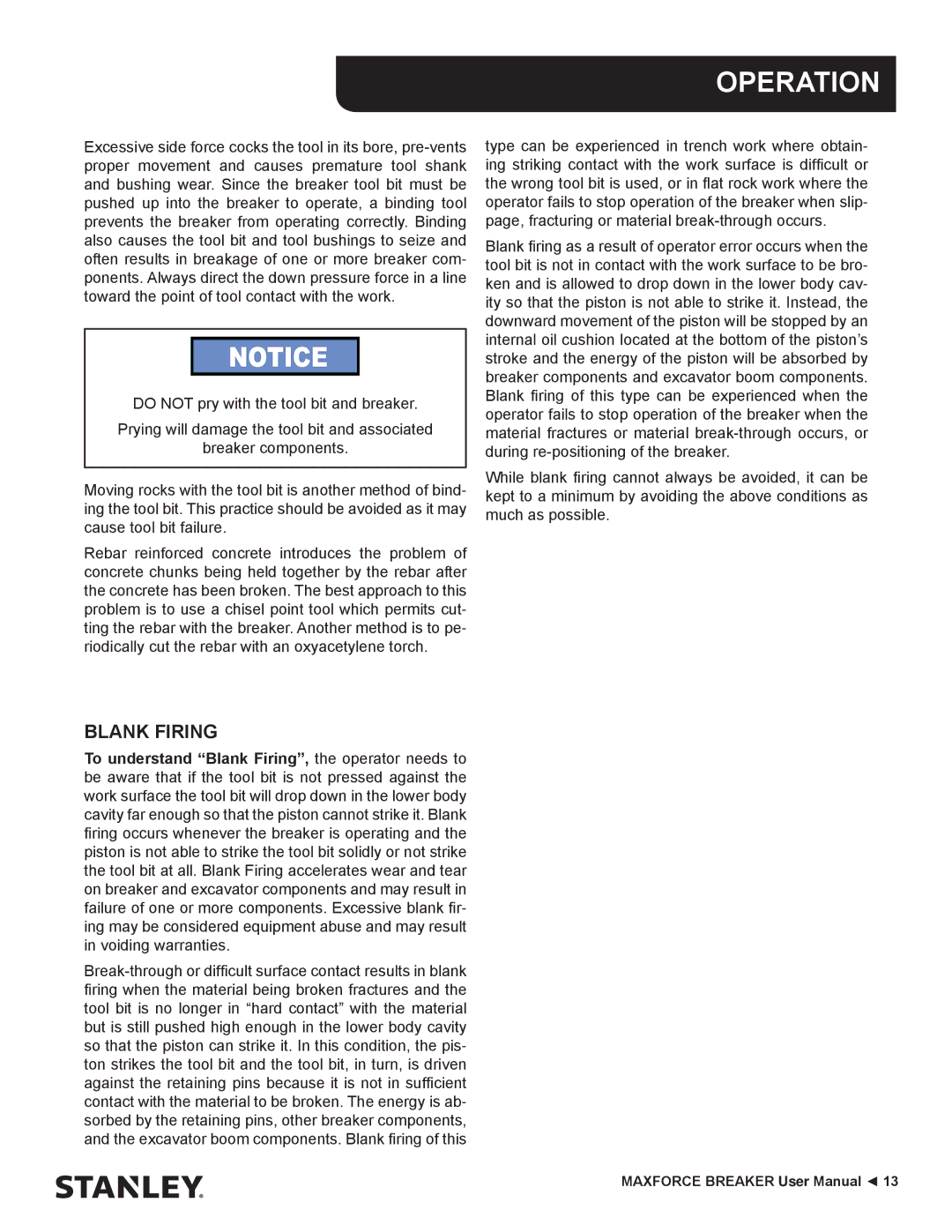MBX138 thru MBX608 specifications
Stanley Black & Decker has long been synonymous with innovation and quality in the power tools and machinery sector. Their MBX series, specifically the MBX138 through MBX608, exemplifies this commitment, offering a diverse range of electric and pneumatic tools tailored to meet the demands of both professionals and DIY enthusiasts.The MBX138 is a compact and versatile tool designed for those who require precision in smaller applications. It features a lightweight design, making it easy to maneuver while still delivering robust performance. With a powerful motor and adjustable speed settings, users can tackle a variety of tasks, from sanding to grinding, with ease.
As we advance through the series, the MBX248 maintains the core functionalities of its predecessor while introducing enhancements for greater efficiency. This model boasts improved ergonomics, including a molded grip that reduces user fatigue during prolonged use. The MBX248 is equipped with advanced features such as dust collection systems to keep workspaces clean and free from debris.
The MBX368 raises the bar further, integrating smart technology that allows users to connect via Bluetooth. This feature enables real-time monitoring of tool performance and battery life, ensuring optimal use and minimizing downtime. The MBX368 is ideal for professionals who rely on their tools for daily tasks and require a seamless integration of technology into their work processes.
The flagship of the series, the MBX608, combines power and versatility, making it suitable for heavy-duty applications. With an ultra-high torque motor and multiple attachments available, this tool is a workhorse in any industrial setting. It includes advanced safety features, such as overload protection and automatic shut-off, providing peace of mind to users who operate in demanding environments.
All models in the MBX series are designed with durability in mind. The tough outer casing and high-impact materials ensure that these tools can withstand the rigors of daily use. Furthermore, user-friendly interfaces and straightforward maintenance routines make them a practical choice for a broad range of users, from novice hobbyists to seasoned experts.
In summary, the MBX138 through MBX608 models from Stanley Black & Decker exemplify a comprehensive approach to tool design, combining performance, safety, and technological advancements. This series reflects the company's commitment to quality and innovation, ensuring that users can rely on these tools for both precision and power in their projects. Whether for home use or in a professional setting, the MBX series stands out as an excellent investment for anyone seeking reliability and efficiency.

